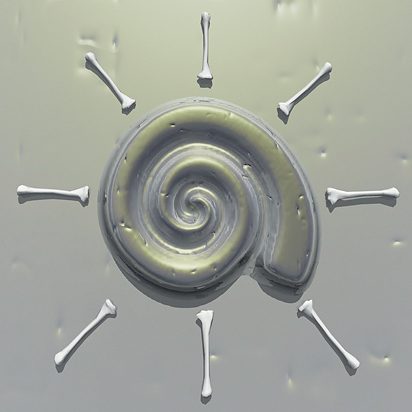
The image is of calcium pellets stored under argon. Calcium fluoride is used in preparing other metals such as uranium: Method Of Recovering Uranium (1984)). Calcium metal is also used as an alloying agent for aluminium (Aluminium Based Alloy (1980)), copper (Process Of Producing Calcium Copper Alloy (1925)), and lead (Lead Base Calcium Alloy For Electric Accumulator Plates (1960)), for example.
Calcium can form many alloys with with numerous metals.
Natural deposits of limestone (calcium carbonate) can be used directly as a building stone and indirectly for cement.
Calcium carbonate can be produced synthetically (Calcium-Carbonate Manufacture (1916)). When limestone is heated in kilns it gives off carbon dioxide gas, leaving behind quicklime (calcium oxide) (Kiln For Burning Or Calcining Limestone (1901)). This reacts vigorously with water to give slaked lime (calcium hydroxide) (Process Of Converting Quicklime Into Powdered Hydrated Lime (1904)). Slaked lime is used to make concrete, (Impermeable coating material, comprises marble microparticles, slaked lime, white cement, water repellent and concrete retardant (2001)), as a soil conditioner and in water treatment to reduce acidity (Lime Neutralization Process For Treating Acidic Waters (1995)), and in the chemicals industry. It is also used in steel making to remove impurities from the molten iron ore (Manufacture Of Lime With Low Water Content For Steel Manufacture (1981)). When mixed with sand, slaked lime takes up carbon dioxide from the air and hardens as lime plaster: Improvements relating to the preparation of line [sic] plaster (1960).
Gypsum (calcium sulfate) is used by builders as a plaster (Improvements In Or Relating To Calcium Sulphate Plaster Mixes And To Methods Of Applying The Same (1932)), and by nurses for setting bones, as ‘plaster of Paris’.
Calcium reacts with water, but less vigorously than sodium and potassium.
References:
All patent information has been obtained from Espacenet (European Patent Office).